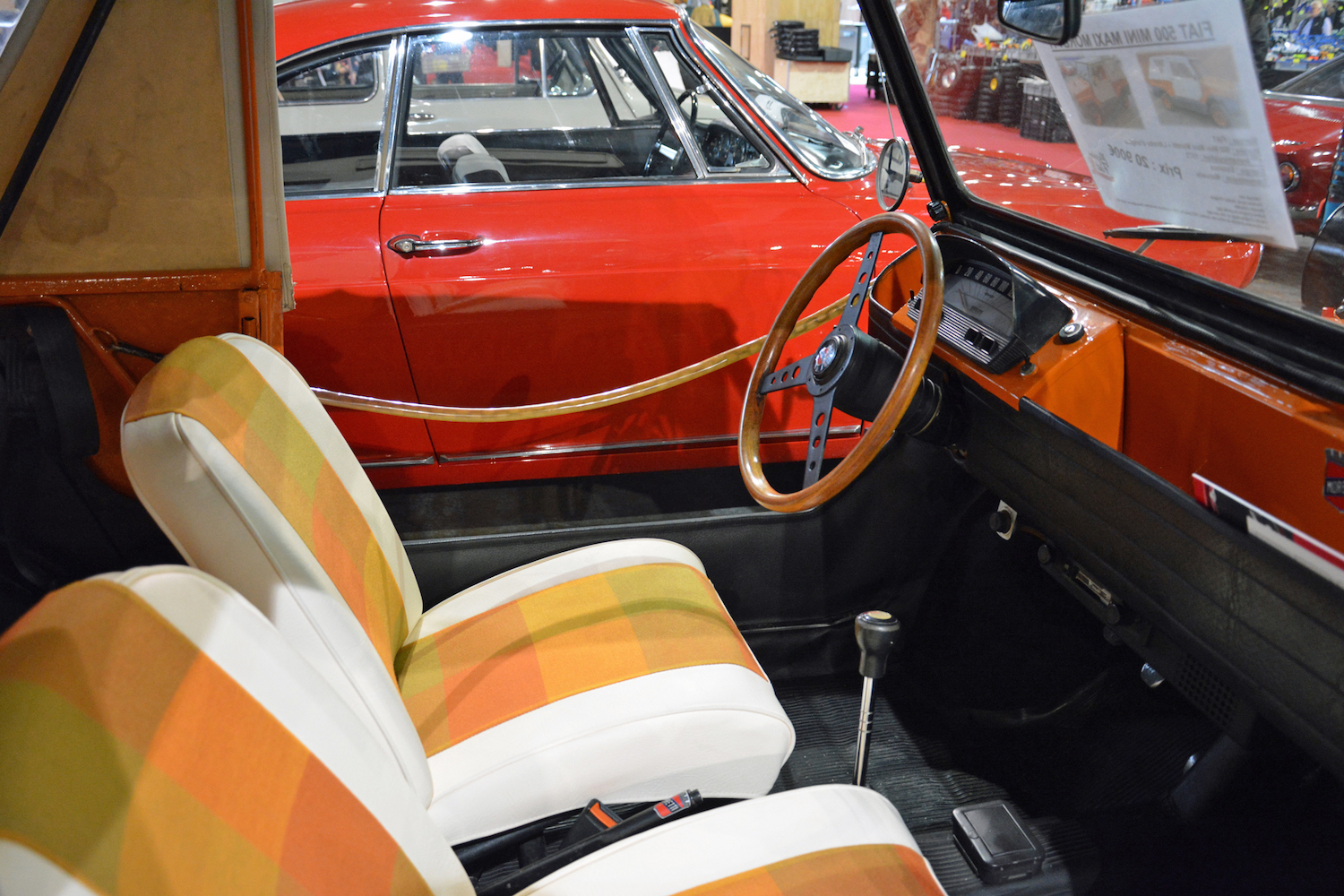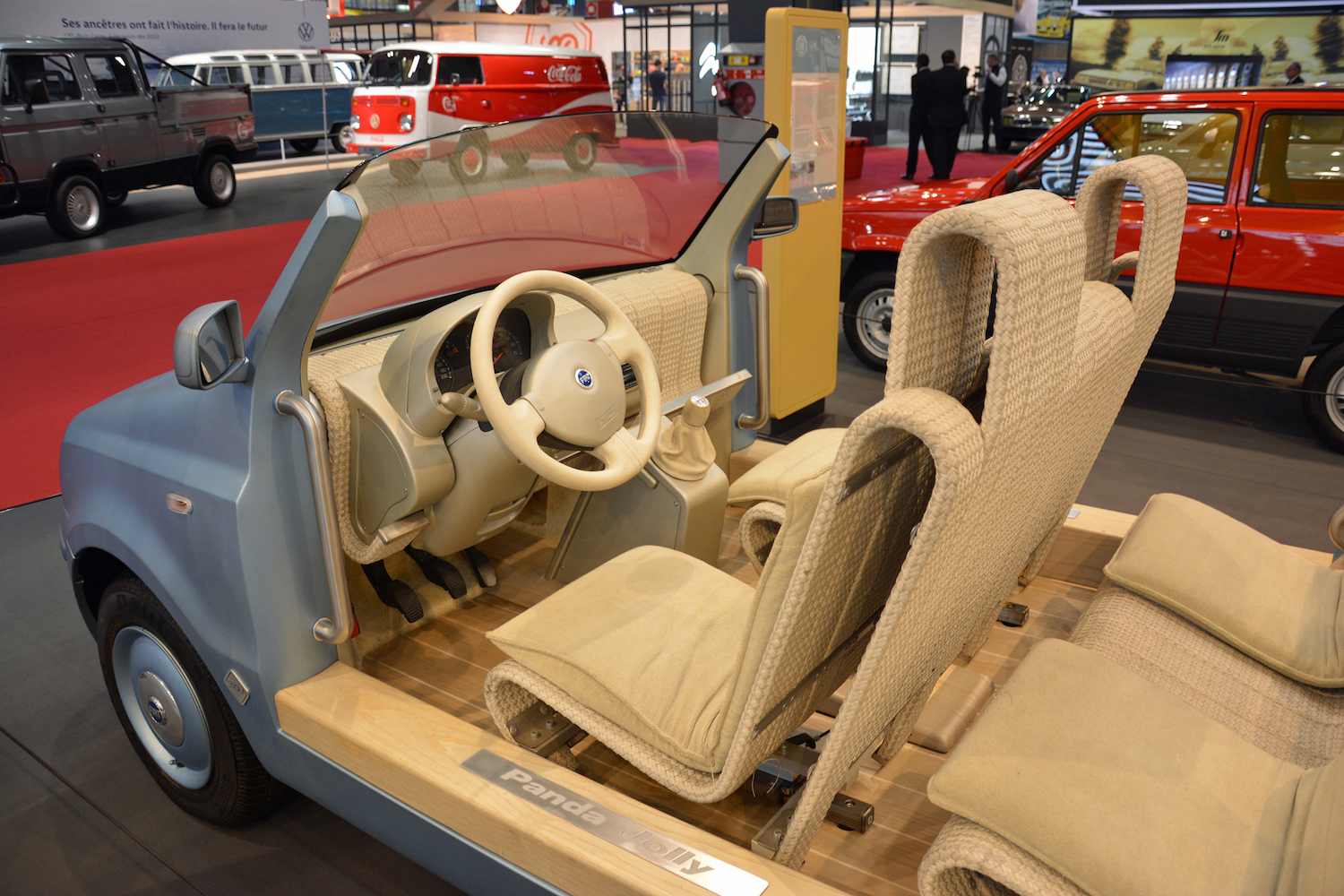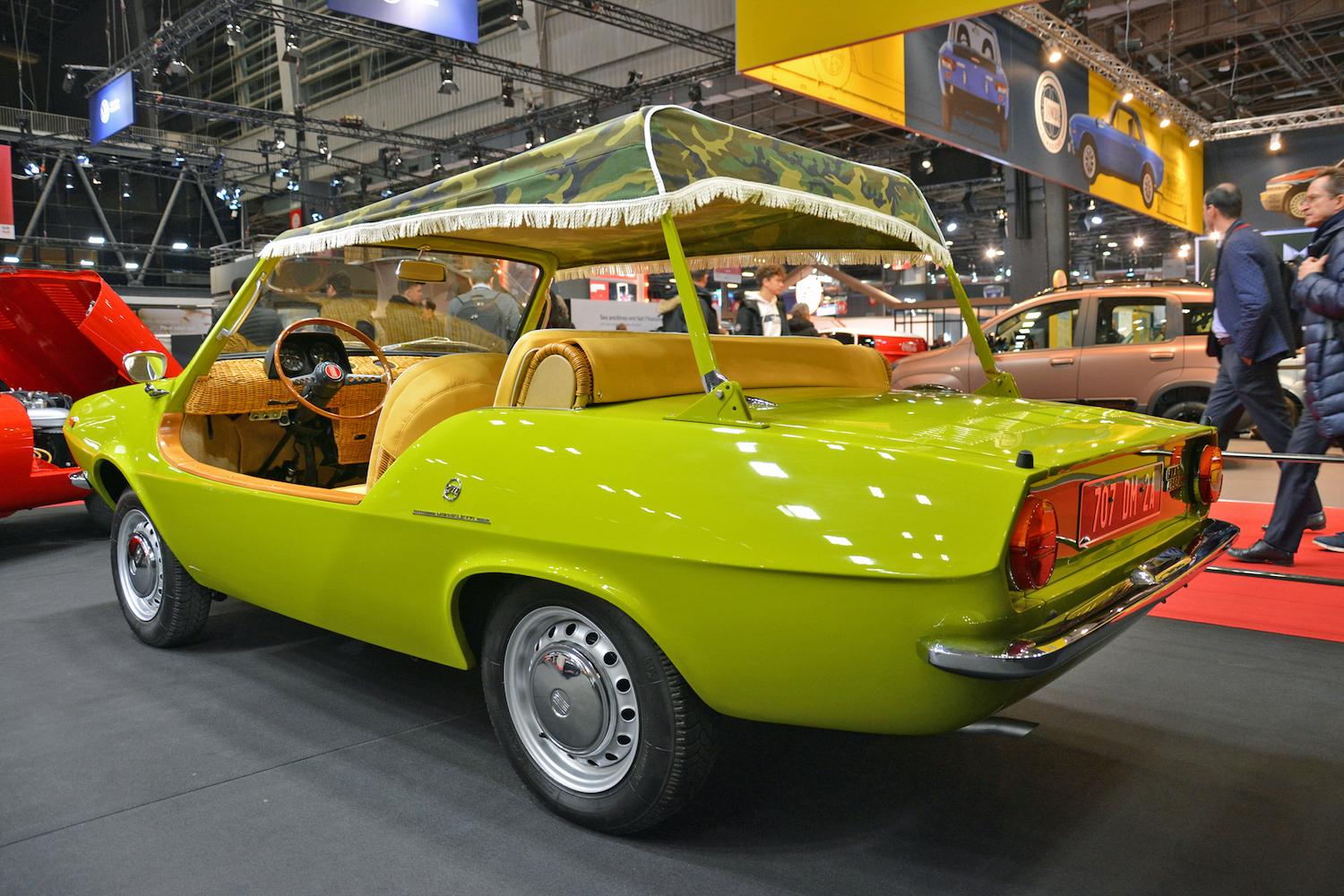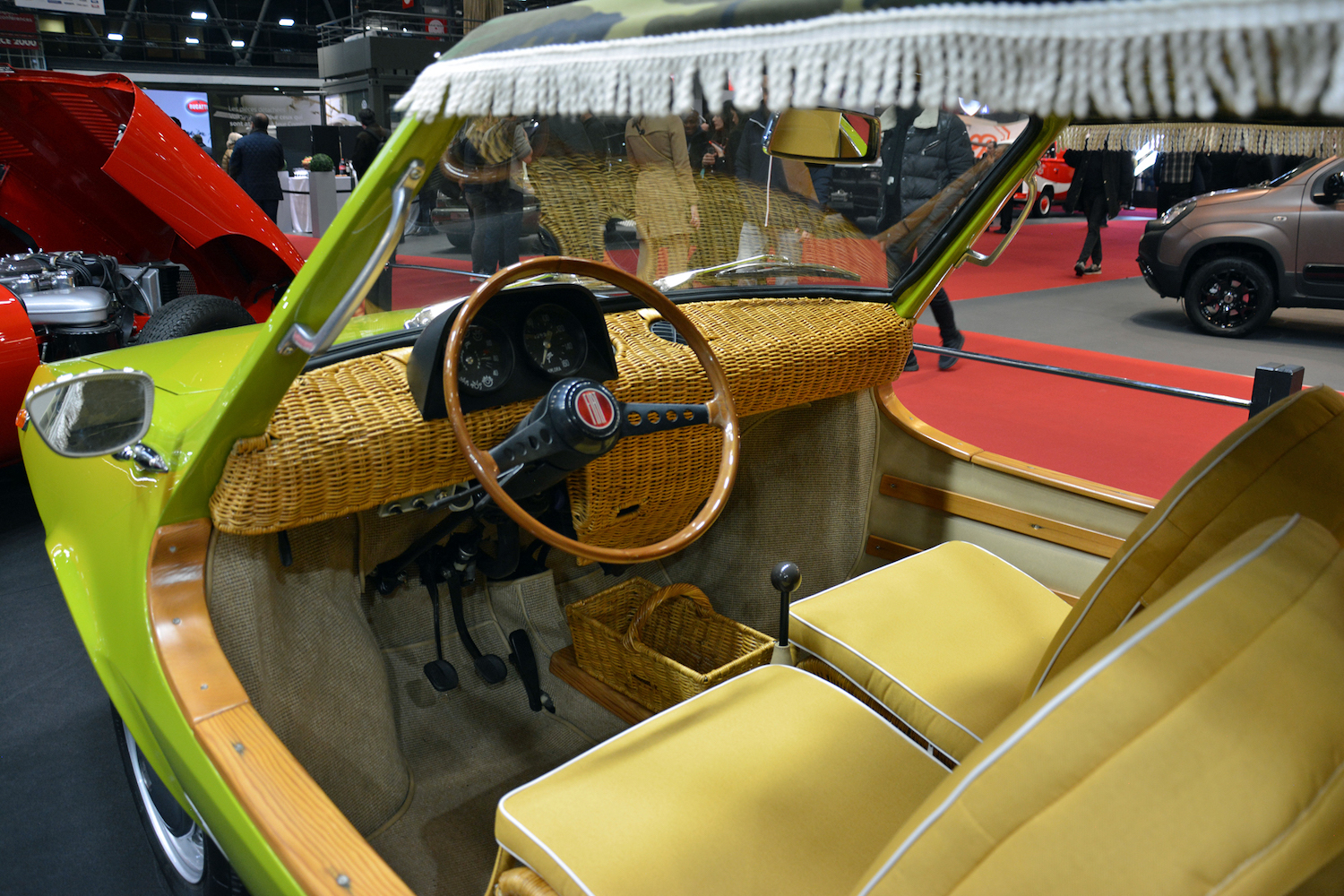Media | Articles
5 cool beach cars to soothe your winter blues
If you’re in Paris, the quickest way to hit the beach is to drive about two-and-half hours north to Dieppe, a city that automotive Francophiles will recognize as Alpine’s hometown. That’s not exactly next door, and I wouldn’t dip a toe in the English Channel in early February, but distance and near-freezing temperatures didn’t stop collectors, clubs, and auction houses from bringing an impressive selection of beach cars to Rétromobile 2020. (If you’re unfamiliar with Rétromobile, Aaron Robinson gave us a first-hand look last year.)
Here are some of the 2020 standouts that were scattered across the convention center.
Fiat Shellette (1971)

If the Fiat 850 was better than the 600 it replaced, it stood to reason that it would make a better beach car. Italian coachbuilder Michelotti put that theory to the test when it teamed up with yacht designer Phillip Schell to create the Shellette. The four-seater offered everything sun-worshippers loved about Ghia’s 600 Jolly, including a copious amount of wicker inside, plus the 850’s more powerful engine.
And, while the Jolly looked just like a topless 600, the Shellette stood out with a specific design because it didn’t share a single body panel with the 850. Only a handful of styling cues, like rear lights sourced from the sedan and the factory-issued emblems, linked it to the humble city car it started life as.
Marketplace
Buy and sell classics with confidence
Historians disagree about how many examples of the Shellette were built by Michelotti. Most estimates fall in the vicinity of 80 cars, which is a rounding error considering Fiat made about 2.2 million 850s.
Citroën Mehari (1972)

Released in 1968, the Citroën Mehari wasn’t the first or the last beach car, but it’s one of the best-known (and most valuable) members of this now-dead segment. Sheer simplicity was a big part of its appeal. It’s essentially a 2CV frame and running gear (including the air-cooled twin) topped by a plastic body. It was developed as a do-it-all workhorse, a sort of motorized wheelbarrow, and it reached the beach almost by accident. Once it found it, it never left, and it’s still highly prized in coastal regions.
The 1972 example that Citroën brought to Rétromobile is a custom-made example that highlights the seven different colors the model was offered in during a production run that lasted from 1968–87. Use it as a reference if you’re in the market for one and wondering whether it’s still wearing its original color.
Fiat 500 Mini Maxi by Moretti (1973)

Moretti designed the 500 Mini Maxi for those who found the 500- and 600-based Jolly models and their canopy top too kitsch. It’s based on the rear-engined 500 that put millions of Italians on wheels, but it wears a boxier design that’s almost rugged when you look at it from the right angle. While it has no doors and a soft top, there’s not an inch of wicker anywhere in the car. It’s far more practical, too, because it seats four and there’s a generously-sized parcel shelf right above the air-cooled flat-twin.
Moretti made a few hundred examples of the Mini Maxi from the early 1970s–80, so production continued well after the 500 retired in 1975. This was an ultra-rare car to begin with, and finding a clean one in 2020 is easier said than done. Keep in mind the 50—like every Fiat from that era —was terrifically prone to rust. Now, remember this is a beach car; it was built to live next to a huge quantity of salt water, and, correspondingly, salty air. There’s no word on how many examples remain, but I’d wager a significant chunk of the production run ended life as a pile of rust dust.
Renault Rodeo (1973)

Many beach cars sold in Europe were created by aftermarket companies and added to a major manufacturer’s range almost as an afterthought. The Renault Rodeo is no exception. It was designed by a small French company named Ateliers de Construction du Livradois (ACL) and presented to Renault executives as a turn-key way to compete against the increasingly popular Citroën Mehari. Officials needed the model, and they liked ACL’s proposition, so they green-lit the project in 1970.
Manufacturing the Rodeo was relatively cost-efficient because everything under the sheet metal came from the Renault parts bin. It sat on a frame borrowed from the 4 F4 van and received an 845cc four-cylinder engine also found in the 6. Its body panels were made of plastic, like the Mehari’s, so it didn’t rust. ACL (which later changed its name to Teilhol) and Renault made three different variants of the Rodeo between 1970–87, but the model never matched the Mehari’s popularity, and it still lags behind it on the collector car market. Here’s a hint: it’s cheaper, just as fun, and far more drivable.
This blue and white 1973 example decked out with stickers, carbon fiber trim on either side of the dashboard, and alloy wheels was listed at about €9000 (nearly $10,000). While I’m certainly not here to judge the quality and the value of the cars offered for sale at Rétromobile, I’d be negligent not to point out I’ve seen much more original examples listed at half the price in the classifieds.
Fiat Panda Jolly concept (2006)

Fiat celebrated the Panda nameplate’s 40th birthday by displaying the 2006 Jolly concept next to an early air-cooled model in better-than-new condition. Based on the second-generation model released in 2003, the Jolly put a modern spin on the emblematic 600-based beach cars that swarmed ritzy seaside resorts in the 1950s and ’60s. It’s a one-off, but it’s not a static concept designed solely for the auto show circuit. It was briefly put into service on the island of Capri to shuttle VIP guests.
In both cases, the Jolly name denotes an open-top four-seater designed for warm days in sunny climates. It’s the only Panda yacht-owning vacationers would ever willingly ride in, and stylists rewarded their acceptance with real wood paneling that looks like it comes from the deck of a multi-million-dollar boat. The cloth upholstery’s wicker motif is reminiscent of the 600 Jolly, but there’s one key difference between the two cars: a city car without a roof or doors couldn’t easily have been made street-legal in 2006, let alone in 2020. Volkswagen is the only company brave enough to give it a shot.



































